Written by Millie Mannering
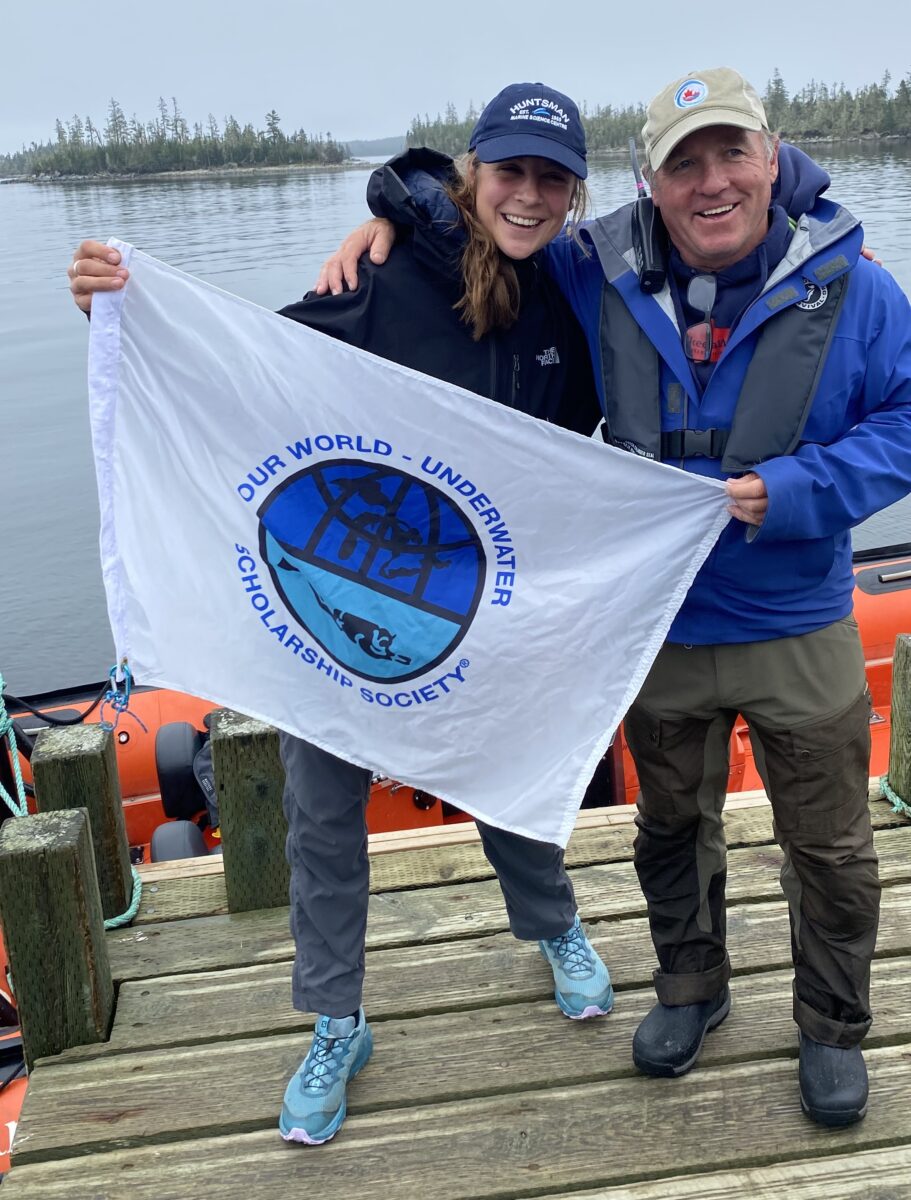
Voyaging on the ocean is one of my favourite things. It is a mixture of the strong camaraderie built onboard the vessel, the excitement of exploring remote locations and the ever-changing nature of being at sea which appeal most to me. My experience joining the Ocean Conservation Expedition in Eastern Canada, led by the Students on Ice Foundation (SOI) had all these elements and much, much more.
Millie Mannering with Geoff Green, Founder and President of SOI Foundation.
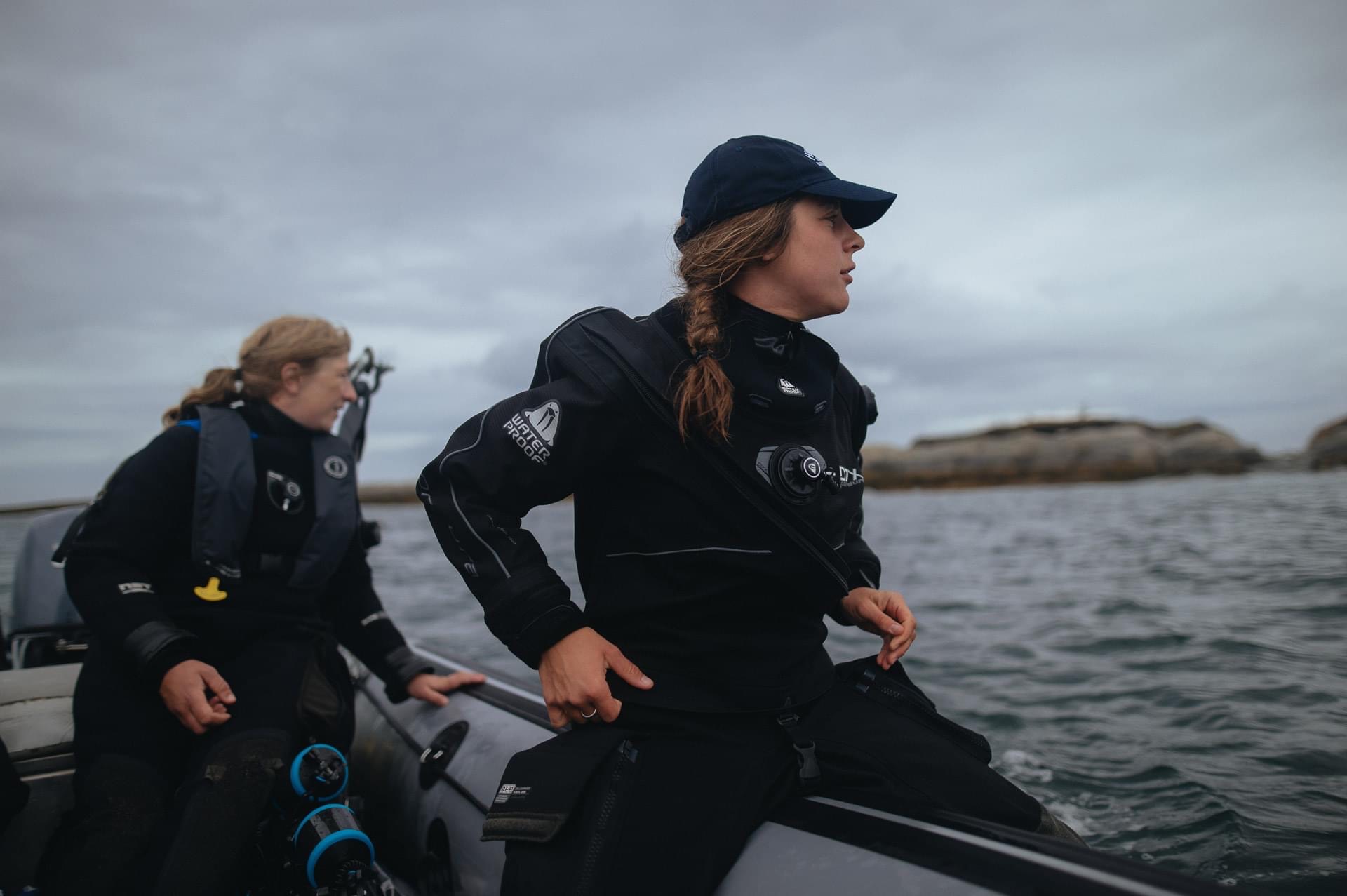
Assessing our dive site at the 100 Wild Islands alongside Research Scientist, Claire Goodwin. Photo: SOI Foundation
The Ocean Conservation Expedition brought together diverse educational and research partners, Indigenous community representatives, artists, industry, media and youth. Travelling to distinct and critical marine environments the expedition aimed to provide a platform for research and stewardship of coastal and marine environments and showcase the wonders of these areas. I was invited by Dr. Claire Goodwin, Research Scientist in Marine Biodiversity at the Huntsman Marine Science Centre, to help conduct scientific research onboard. Living on the indigenous owned icebreaker, Polar Prince, we sailed along the Nova Scotia coastline and had a truly incredible time!
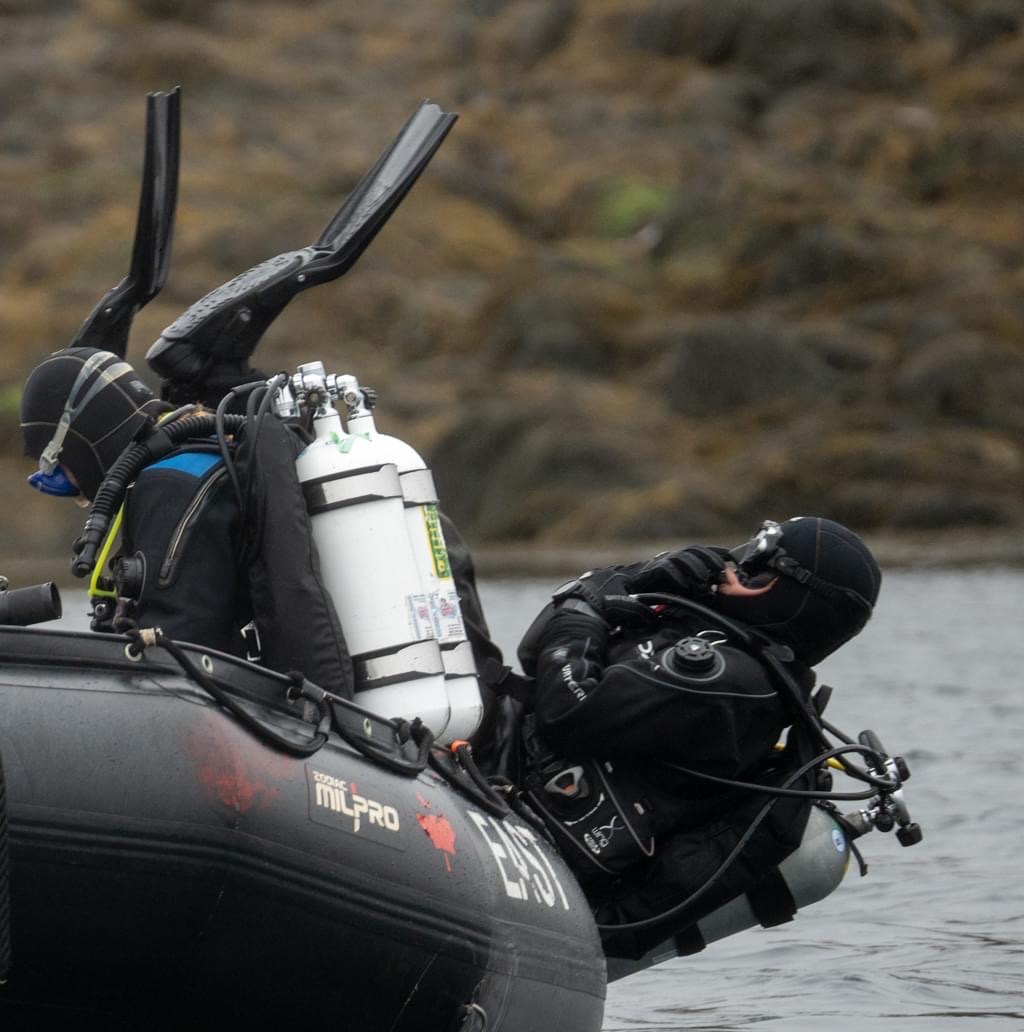


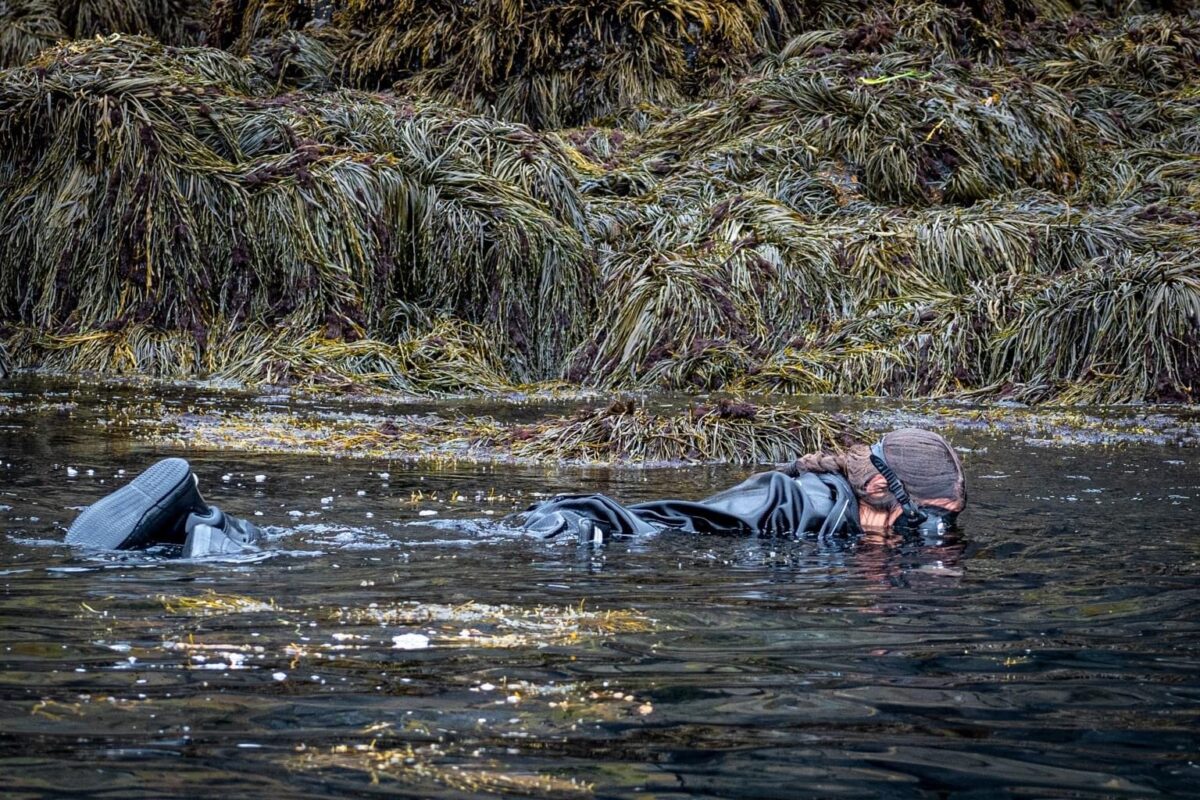
Left to Right: Straight into diving the first site in the Grand Passage, Briar Island. Claire Goodwin and Millie Mannering recording sampling site information. Discovering exciting specimens in our sediment samples! The spectacular seaweed community on Briar Island caused for an impromptu swim! Photos: SOI Foundation
The trip was fieldwork for Huntsman’s Fisheries and Oceans Canada funded project to create a genetic barcode library of Atlantic Canadian marine invertebrates. This meant our work focused on collecting specimens of as many different species as possible! We achieved this through various collection methods including grab sampling, shore collection and SCUBA diving. Field and photographic identification of specimens was then recorded, and samples preserved for future DNA analysis. Environmental DNA can be used as a monitoring technique to understand species composition in an area, however it relies on a complete barcode library.
Learn more about what a barcode is in this informative article by Huntsman Marine Science Centre’s Christy Carr.
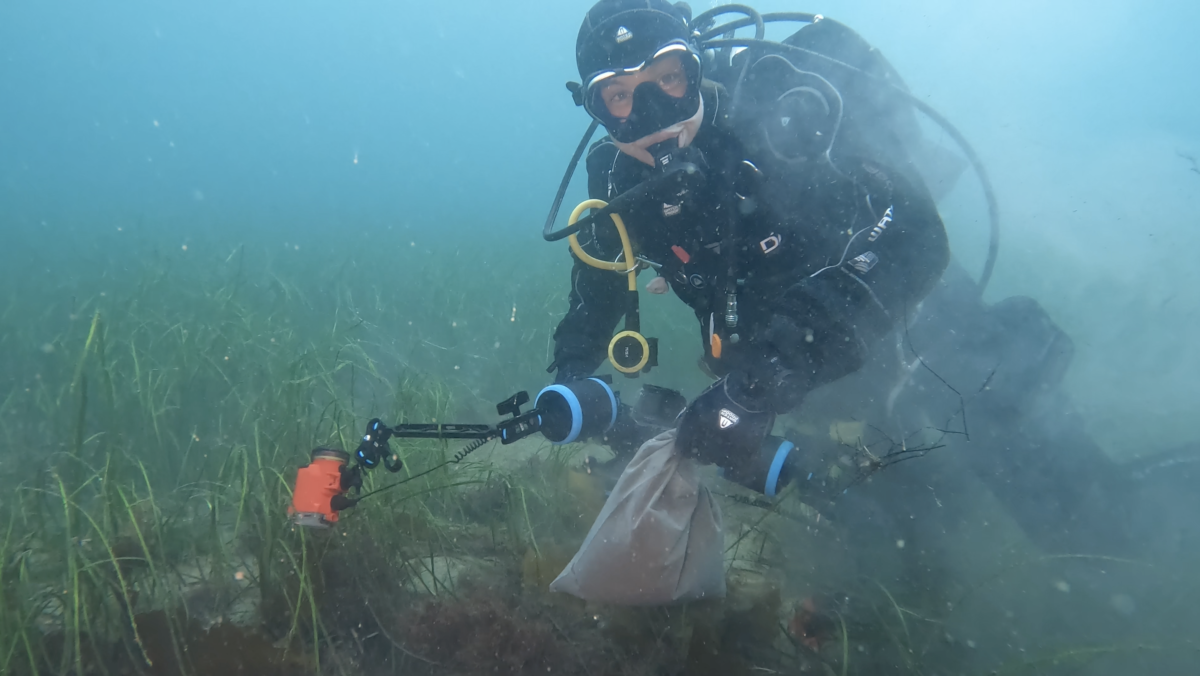
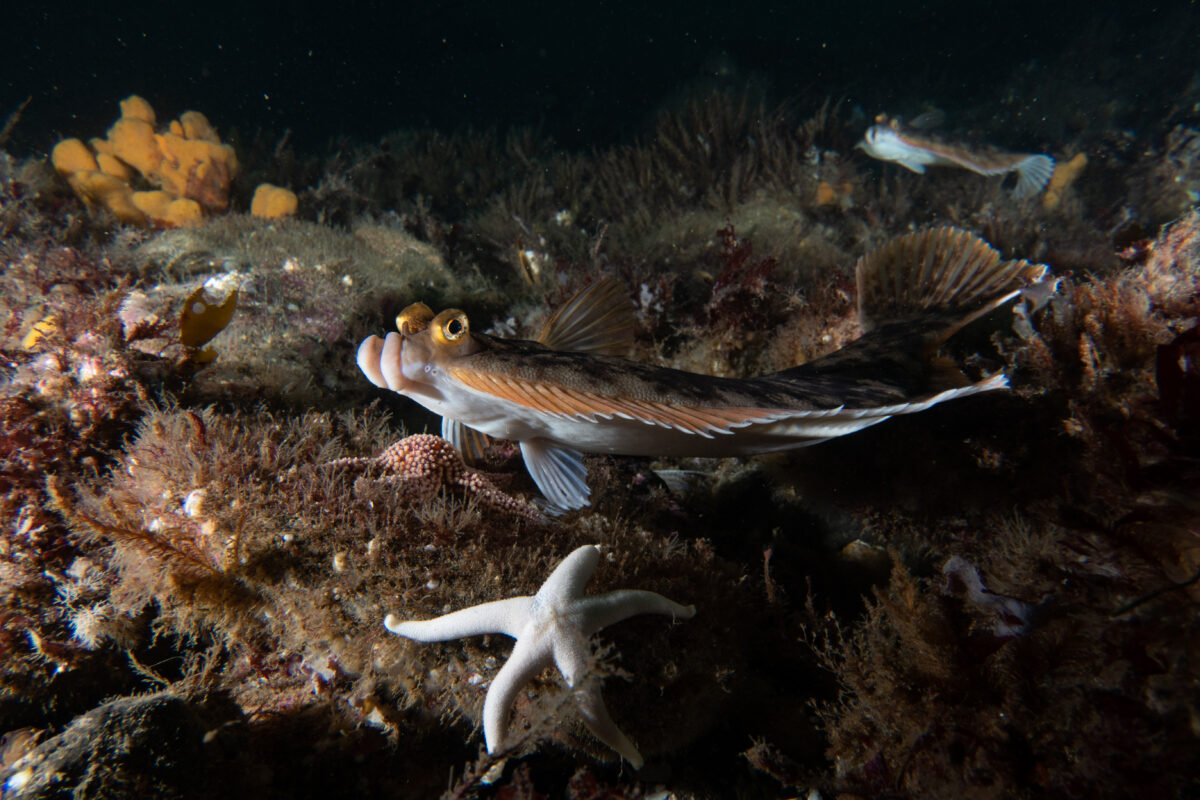
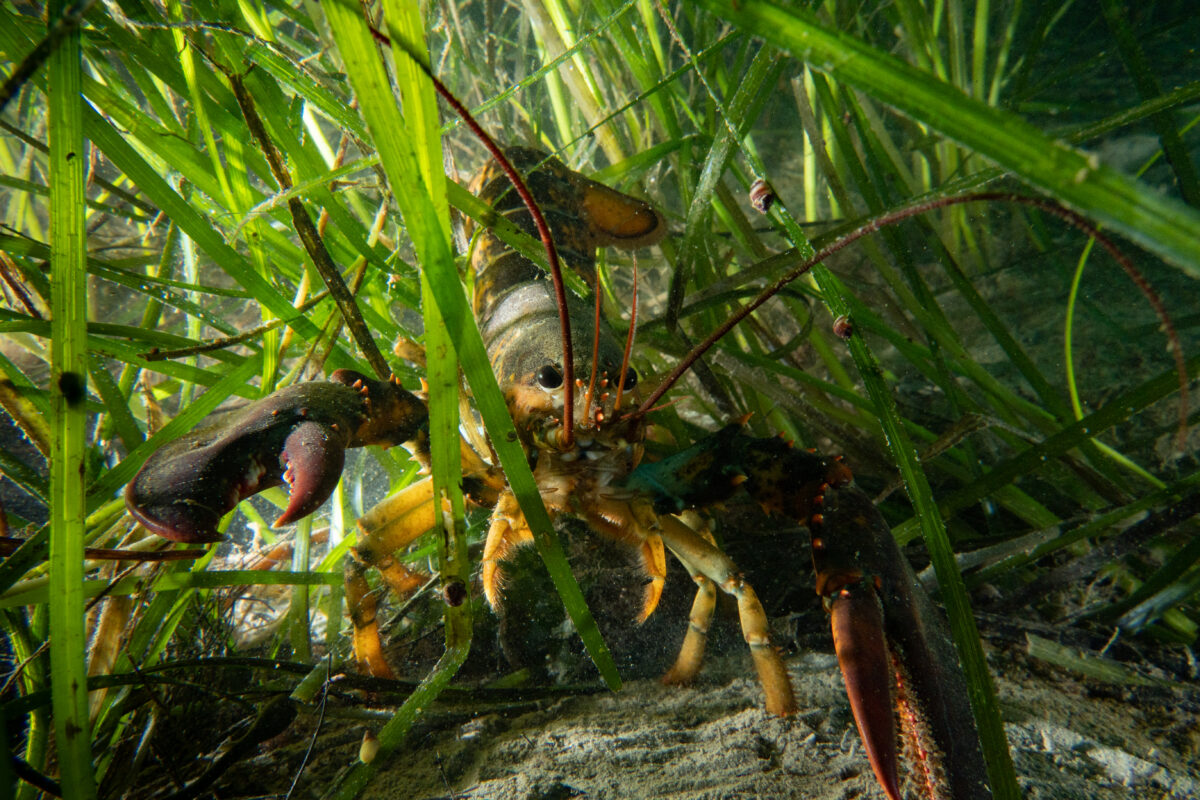

Collecting a bag of mud – hopefully filled with worms! Curious winter flounder and lobster during our collection dives. Claire Goodwin holding samples and the surface marker buoy during a safety stop. Photos: Claire Goodwin, Millie Mannering
Exploration was an integral and exciting aspect to our research project as we ventured into remote areas of the coastline and investigated a variety of underwater habitats. The limited information available meant we had to combine bathymetric data, oceanographic knowledge and weather conditions daily to determine dive sites. The Bay of Fundy claims the highest tides in the world, with a mean tidal range of 11.7m! It was essential to determine tidal movements and plan our dive profiles accordingly (Huntsman is a member of the Canadian Association for Underwater Science and dives in accordance with their standards). The tide turned as anticipated during a dive in Brier Island’s Grand Passage, and we ended the dive when the current became too strong to hold on to the bottom. As we ascended to complete our safety stop, Claire and I were taken by the tide on an exhilarating rollercoaster ride! Learn more about our diving adventures, my excitement at first seeing “very friendly, gigantic lobsters” and how the expedition unfolded in the engaging Canadian Geographic Society Explore podcast produced by David McGuffin.
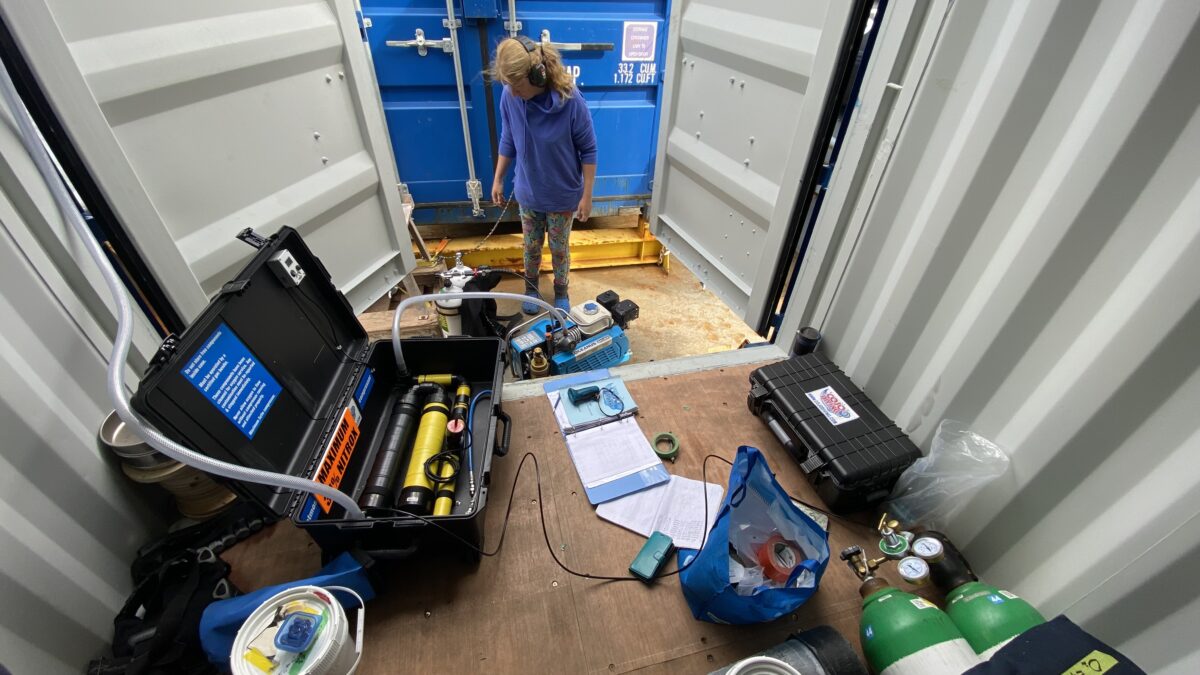
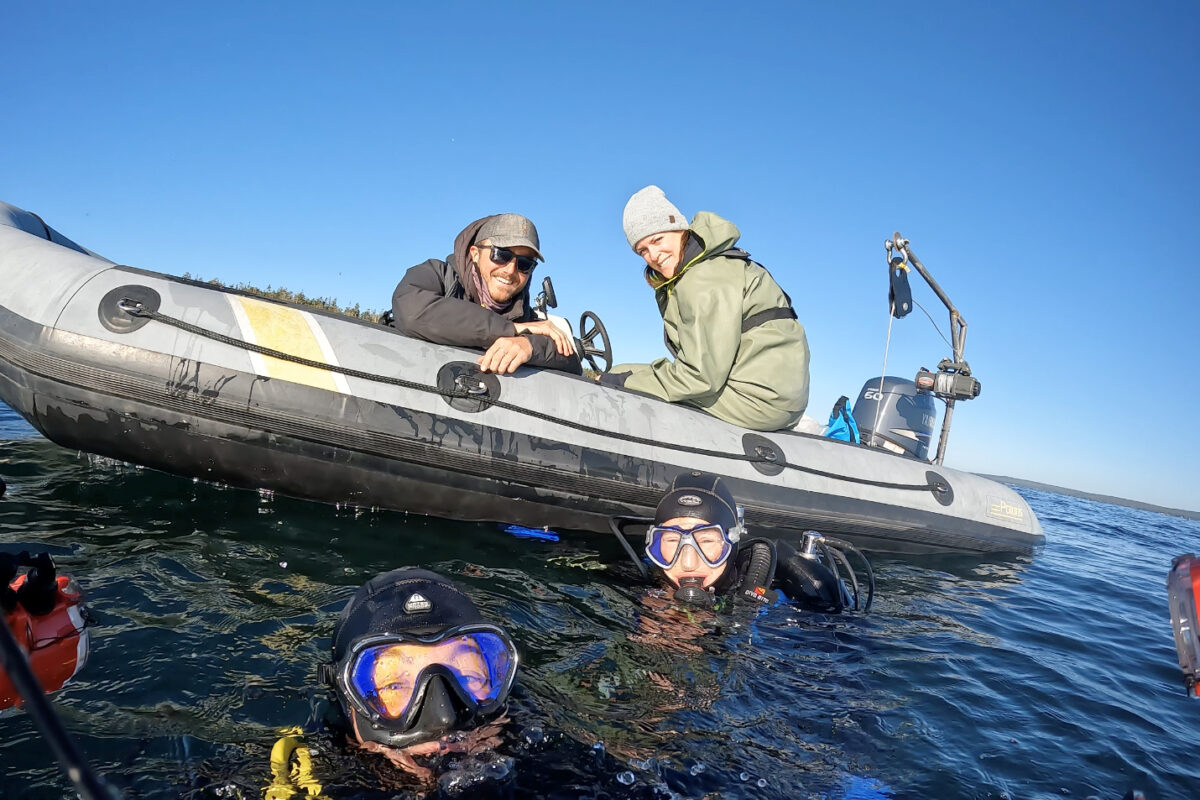
I loved using the portable set-up which allowed us to blend gas and fill tanks onboard the Polar Prince! The dive team consisting of Millie Mannering, Sam Dews (zodiac skipper and diver medical technician), Claire Goodwin and Christy Carr. Photos: Millie Mannering
Our plans changed mid-expedition as the weather took a turn for the worse. Despite not being my first time in a hurricane sailing, it is always nerve-racking to witness the power of the elements at sea. As the hurricane increased in intensity and was forecasted to track directly to the Polar Prince, we sought safe anchorage in a nearby bay while feasting on the Atlantic Canadian tradition of ‘storm chips’. Although we rode out the storm unscathed, it was devastating to hear of the destruction further North in Newfoundland and Prince Edward Island as a result of Hurricane Fiona.
Hurricane Fiona advancing on Nova Scotia. Credit: Windy
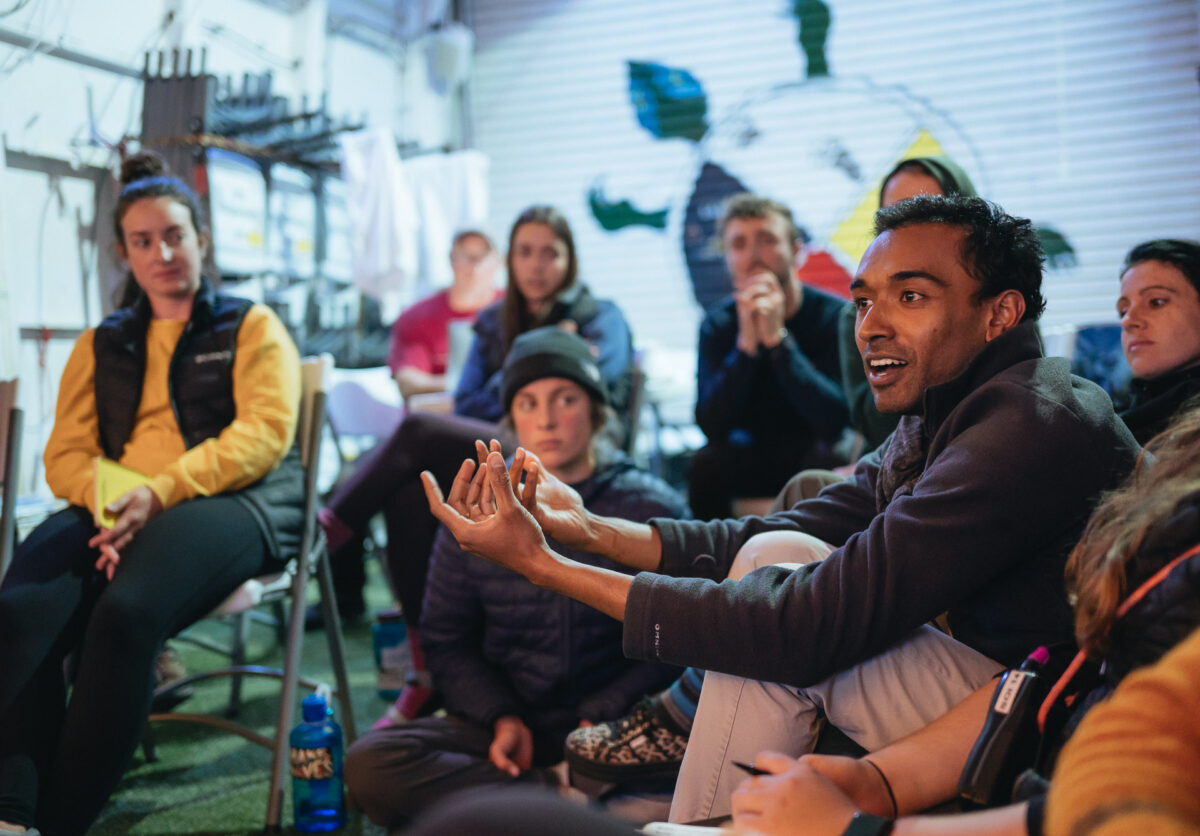
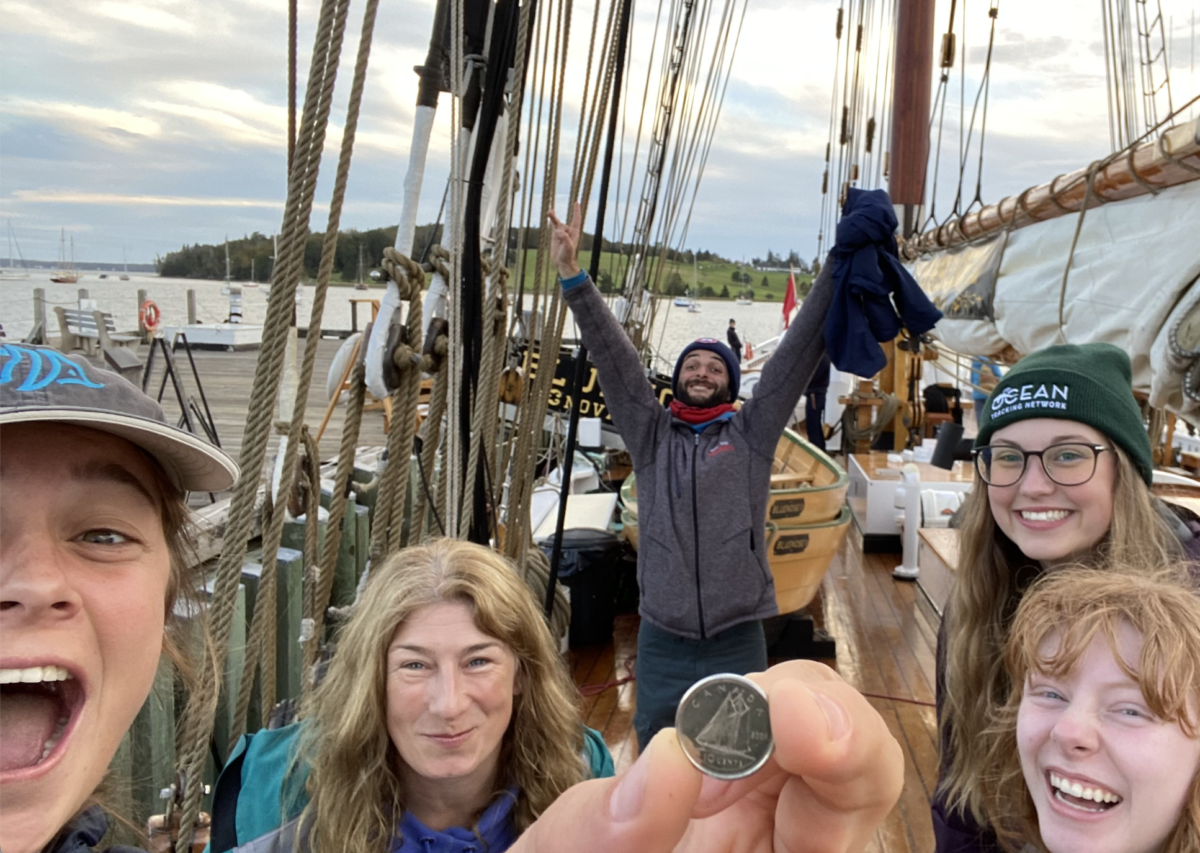
Discussing the importance of marine protected area and different management strategies. Holding the Canadian dime embossed with the iconic schooner, The Bluenose, while standing onboard the ship itself in Lunenburg! Photos: SOI Foundation, Millie Mannering
Onboard the Polar Prince, we gathered daily in the hanger for seminars, workshops, creative sessions and to build connections with each other. Geoff Green explained to the delegation that “people often say if these walls could talk… well they can”. Adorned with beautiful artwork, stories of coastal communities and messages from previous SOI participants, the legacy of the Polar Prince was evident. Bringing together such a diverse range of participants onboard led to some fascinating discussions around the purpose and need for ocean conservation. It was inspiring to form connections across diverse facets of the marine space and to facilitate future collaborations. To all the expedition participants – thank you for sharing your knowledge, perspective, passion and for empowering me to continue the mission of ocean conservation!
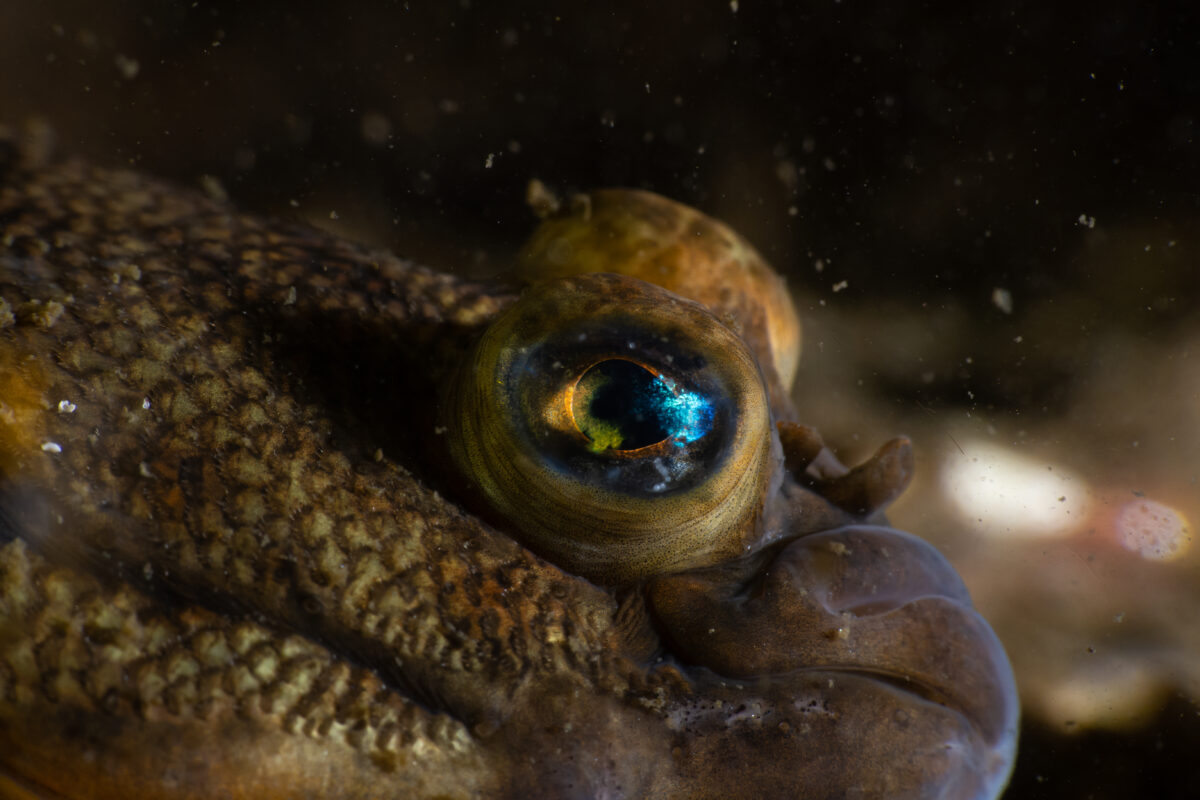
Photo: Millie Mannering
Many thanks to the Geoff Green and the Students on Ice Foundation for creating such an impactful program and the opportunity to partake in this remarkable expedition.
Thank you to Huntsman Marine Science Centre for including me in the research team and Christy Carr for all the support and sharing your endless knowledge. Thanks to the talented Sam Dews for smooth zodiac operations, helping with our heavy equipment and filling the surface intervals with comedy.
Lastly, thank you Claire for being such an inspiration to me and a truly fantastic dive buddy!
Thank you to the Our World Underwater Scholarship Society and Rolex for making the scholarship possible. I would also like to thank my equipment sponsors Reef Photo and Video, Nauticam and Light and Motion as well as TUSA, Waterproof, Tabata Australia and Suunto.
Trip Tune: I quit my job – Old Man Leudecke
Top Tip: Ensure your drysuit is zipped up before competing in backflip competitions.
Thank you for following along with my journey! Join me, above and beneath the surface, on my adventures throughout the scholarship year. Subscribe to my blogs, follow along on Instagram, Facebook or flick me an email!
My next expedition is to the ends of the earth …